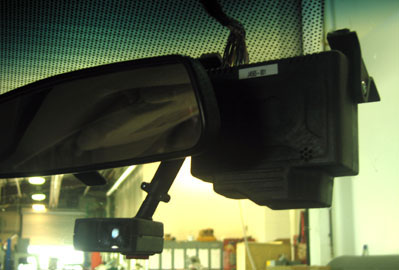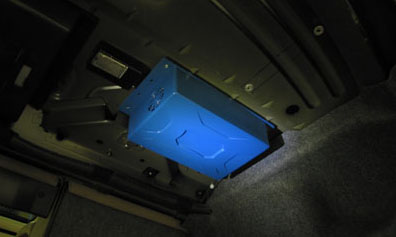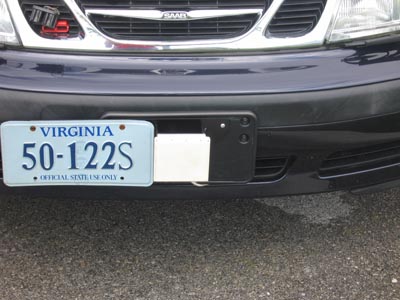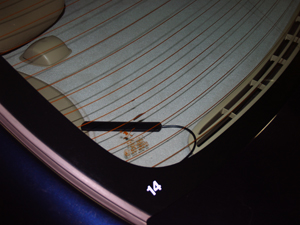
The installed instrumentation or data acquisition system will collect data using a number of sensors and video cameras whenever the vehicle is running. The data acquisition system (DAS) that will be used for this study will compile data from the vehicle network as well as from sensors added for this particular study. The general design characteristics for the DAS include the following:

Head Unit from the Passenger Perspective. From the driver's perspective, it is barely noticeable.
There are three primary components: The Head Unit, the Main Unit, and the Front Radar.
The Head Unit is approximately 4” X 5” in size and is mounted in the vicinity of the rear view mirror, but does not obstruct the driver's view. Cameras, other sensors, and an incident pushbutton are incorporated into the Head Unit:

The main unit is affixed to the inside top of the trunk. In a van or truck, it would be located under a seat.
The main unit is quite small — about the size of a book — and will be mounted in the trunk, under the dash, under a seat or elsewhere (depending on the vehicle make and model) using customized mountings that use existing attachment points. The main unit also incorporates the vehicle network box which will be located under the front dashboard and collect information on vehicle speed, throttle position, turn signal use, and brake application, as available from the vehicle network.
Radar will be mounted on the front of the vehicle for data collection. It does not function as a radar detector and is legal to have on the vehicle.

Front Radar
The DAS will be installed on your vehicle during your enrollment session. You will be asked to bring your vehicle to the research facility to have the DAS installed. Before we begin installation, we will show you where we intend to place the system and show you pictures of what a completed installation will look like.

Antenna on the rear package shelf.